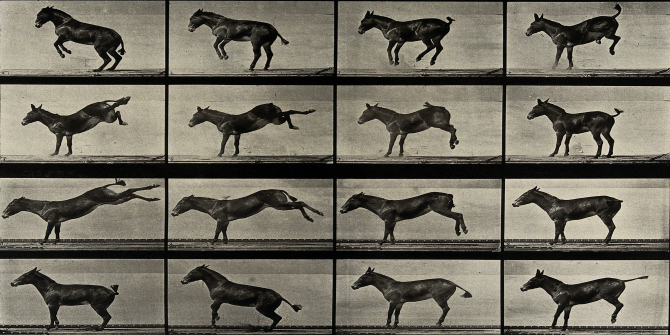Author Taku Osoegawa provides a nuanced and politically relevant study on the contemporary relationship between Lebanon and Syria, grounding it in International Relations theory, by exploring Lebanon’s own reasons for aligning with Syria, writes Megan Smith. She finds this book to be a useful text in deconstructing the alliances made with Syria by Lebanese politicians and on diplomacy in the Middle East on the whole.
Syria and Lebanon: International Relations and Diplomacy in the Middle East. Taku Osoegawa. I.B. Tauris. 2015.
The assassination of the former Lebanese Prime Minister, Rafiq al-Hariri, in 2005, represented an important change in the status quo of Syrian domination of Lebanon. Taku Osoegawa provides a nuanced and politically relevant study on the contemporary relationship between Lebanon and Syria, grounding it in International Relations (IR) theory. He challenges the claim that ‘…Lebanon and its leaders were simple puppets of the Syrian regime during the thirty years characterized as Lebanon under Syrian hegemony’. He addresses a fundamental issue in the literature on Lebanese international politics, which focuses on the role of external powers while undermining a rigorous history of Lebanese leaders’ agency. His account on the relationship between these sibling nations is refined, measured and appropriate. Osoegawa provides a rich analysis with an adept use of theory, which is essential not only for the study of the relationship between Lebanon and Syria, but also their impact on political stability and regional dynamics in the wider Middle East.
Osoegawa considers the applicability of key IR theories: simple realism, complex realism, constructivism and complex interdependence. Osoegawa explores Lebanon’s own reasons for aligning with Syria, answering the question: ‘Which theories of international relations are most relevant, or are best suited, to explain Lebanon’s relations – particularly its bandwagoning – with Syria from 1970 (when the Asad regime was established) to the present day?’. The chapters all follow a similar structure discussing such issues in relation to the term of office of each Lebanese president and government as a case for applying IR theory. Osoegawa provides a breakdown of the relationships between leaders with an acute understanding of trans-state ties between Syria and Lebanon. However, one must consider that by focusing on this period, 1970-2005, Osoegawa may be missing a broader historical picture regarding Lebanon’s agency following independence from the French in 1943.
One of the more interesting and contemporarily relevant chapters entitled Lebanon from ‘Anarchy’ to ‘Indirect Rule’ under Syria (1988-2005), focuses on Lebanon’s political leadership and diplomatic relations with Syria and the rest of the Middle East. Hariri occasionally acted independently of the Syria regime with strong Lebanese and international backing, and consolidated a context within which he could act as a rational actor defending Lebanese sovereignty by counterbalancing the power of Syria, either by pressuring Syria or even negotiating with Israel. However, Osoegawa argues that Hariri’s motivation for such balancing is not reducible to simple realism but rather, ‘…his desire to both manipulate and appease Syrian-backed groups and figures in Lebanon’. Osoegawa draws on complex realism to illustrate how Hariri perceived interrelated threats in his decision-making with not only Syria but the key Lebanese sectarian non-governmental actors – the Maronites, Sunnis, Shi’a and Druze – which maintained various trans-state relations with Syria. Therefore, he argues that Hariri was ‘…sometimes balancing with the West to contain Syrian backed Lebanese groups such as Hizbullah or bandwagoning with Damascus to garner the support of pro-Syrian actors’. More interestingly, Osoegawa also pulls in factors like identity (constructivism) and shared interests and interdependency (complex interdependence) to explain Hariri’s decision-making with Syria. Such factors bring in a more nuanced picture of Hariri, with Osoegawa noting that despite Hariri being a Sunni, he viewed the Syrian presence in Lebanon as a threat to his economic reconstruction.

Osoegawa’s core argument is valid, that Hariri can be seen to have taken Syrian interests into consideration and making concessions where necessary, yet his focus on political leadership and the autonomy of these decisions within a particular historical context illustrates how IR theory can be applied in the case of Lebanese leaders’ decision making process. This key study however is lacking in clarity with these points and the application of IR theory only coming together when read alongside his conclusion. This compartmentalization is unfortunate as his case studies in each chapter, while full of detail and context, are vaguely situated in his analytical framework, and the clarity of his analysis does not come through.
His core thesis that Lebanese decision-making towards the Syrian regime can be, in almost all cases, explained according to the three aforementioned IR theories is of course telling. However, the more interesting insight into such focus on key leaders of the Lebanese state demonstrates the relations of a penetrated weak state with regional power. This can be understood by a combination of the following factors described by several theories that Osoegawa characterizes as ‘omnialignment’ against a variety of external and internal threats described by complex realism, identity described by constructivism, and shared interests and interdependency described by complex interdependence. Although these three theories highlight different aspects of IR, respectively, they share the assumption that states are not unitary, and thus non-state actors and factors influence foreign relations. By offering a theoretical explanation of Lebanon’s relations with Syria, combining these theories is not only a means of grasping various dimensions of Lebanese-Syrian relations, but perhaps can be applied to other similar weak states with a complex formation history and muddled politics. Therefore, this case study could provide a basis for constructing a widely applicable theory of explaining the behavior of penetrated weak states on the whole, and in particular in the region. Osoegawa does an impressive job of examining Lebanon’s own reasons for aligning itself with Syria at specific junctures. However, he could have provided a deeper historical narrative of relations to explain Lebanon’s behavior in some cases, such as Hariri’s personal relationships with other regional actors like Saudi Arabia.
Regardless, it is a book rich in information, with an impressive review of literature making it a useful text in deconstructing the alliances made with Syria by Lebanese politicians and on diplomacy in the Middle East on the whole. Academically, Osoegawa has challenged misconceptions surrounding IR as a self-enclosed discipline in offering an accessible combination of key IR theories that students of history, and politics more generally, will find useful. This is a prime example of IR’s strength and influence in applying its theoretical tools to understanding contemporary challenges, particularly in the wake of the numerous crises afflicting the region at large, specifically in the context of Saudi-Yemen relations in 2015 and the fall-out of the US led invasion of Iraq in 2003. In this case, Osoegawa provides a unique and illuminating account of Lebanese-Syrian relations but also on the contemporary regional dynamics and politics in the Levant.
Megan Smith is completing her MSc in International Relations at the LSE. She has worked throughout East Africa and the Middle East with most recent fieldwork conducted in Egypt with the Africa and Middle East Refugee Assistance. Her research focuses on refugee assistance with a special focus on gender. Follow her on Twitter at @Megan_D_Smith.








